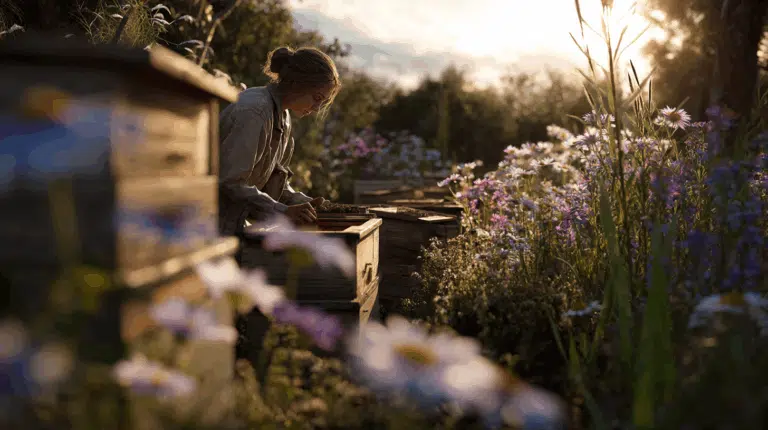Sierlijke en droogtetolerante bloemen met delicate, papieren bloemen in paars, blauw, wit of roze. Ideaal voor borders, potten of als snijbloem, blijft langdurig decoratief in boeketten.
Met Limonium zaden van EasySeeds.eu kun je je tuin, borders en potten vullen met prachtige, langdurige snijbloemen die zowel vers als gedroogd een geweldige decoratie zijn. Limonium uit zaad zaaien, beter bekend als Statice, is een uitstekende keuze voor tuiniers die willen experimenteren met snijbloemen die lang mooi blijven in boeketten en bloemstukken. De fijne, papieren bloemen en stevige stelen maken Limonium bijzonder geschikt voor zowel verse als droogbloemen.
Kleurrijke bloemen en unieke textuur
Limonium produceert kleine, fijne bloemen in tinten zoals paars, lavendel, blauw, wit en roze, die in dichte clusters groeien. Deze bijzondere textuur geeft een speels en decoratief effect in boeketten en borders.
Langdurige bloei en houdbaarheid
Limonium bloeit van midden zomer tot de vroege herfst en behoudt zijn kleur en vorm langdurig, zelfs wanneer de bloemen worden gedroogd. Dit maakt Statice ideaal voor zowel verse als gedroogde bloemstukken.
Onderhoudsvriendelijk en veelzijdig
Statice is eenvoudig te kweken, geschikt voor borders, perken, potten en bakken. Ze zijn ideaal voor zowel beginnende als ervaren tuiniers.
Bijvriendelijk en ecologisch
De bloemen trekken bijen, vlinders en andere bestuivers aan, wat bijdraagt aan biodiversiteit en een gezonde tuinomgeving.
Snijbloemen voor boeketten – De fijne, kleurrijke bloemhoofdjes en stevige stelen maken Limonium perfect voor verse en gedroogde boeketten.
Borders & perken – Voeg structuur, hoogte en een langdurig kleuraccent toe aan je borders met deze sierlijke bloemen.
Potten en bakken – Compacte Limonium-soorten zijn uitstekend geschikt voor potten, balkonbakken en terrassen.
Combinaties met andere snijbloemen – Mix Limonium met Zinnia, Celosia of Gomphrena voor een speels en kleurrijk effect in boeket en border.
Zaaitijd – Zaai binnenshuis van februari tot april of direct buiten na de laatste vorst voor een optimale start.
Grond & standplaats – Gebruik goed doorlatende, kalkrijke zaaigrond en kies een zonnige locatie voor maximale bloei.
Verzorging – Houd de grond licht vochtig tijdens kiemen en eerste groeifase; geef regelmatig voeding voor sterke en gezonde planten.
Uitharden – Laat jonge planten geleidelijk wennen aan buitenomstandigheden voordat ze definitief worden uitgeplant.
Onderhoud – Verwijder verwelkte bloemen (deadheading) om de bloei te verlengen en gezonde stelen te behouden.
Bij EasySeeds.eu vind je een uitgebreid assortiment Limonium (Statice) zaden, geselecteerd op kiemkracht, kleurvariatie en bloei-intensiteit. Of je nu borders wilt vullen, potten wilt verfraaien of zelf boeketten wilt samenstellen – onze Limonium zaden helpen je tuin en boeketten elk seizoen tot leven te brengen.
🌸 Ontdek nu ons assortiment en bestel eenvoudig online – Limonium zaden kopen doe je bij EasySeeds.eu!

Limonium sinuatum (statice): eenjarige plant, stevige stelen, grote bloemschermen in e kleuren paars, blauw, roze, wit, geel. Populair voor verse snijbloemen en droogbloemen.
Limonium perezii: meerjarige plant, lage groeiwijze (30–50 cm), bloemschermen iets kleiner en in de kleur paars tot lavendel, soms wit. Vooral voor droogbloemen en gemengde boeketten.
Limonium latifolium: meerjarige soort, hoge stelen (60–80 cm), bloemtrossen breed en decoratief in de kleur violet tot paars.Geschikt als snijbloem en droogbloem, ideaal voor arrangementen met een natuurlijke uitstraling.
Klimaat: Limonium gedijt het beste in warme, zonnige klimaten. De plant is zeer droogtetolerant en kan groeien op arme, zandige bodems, waardoor hij uitstekend geschikt is voor kustgebieden of droge streken.
Bodem: Limonium geeft de voorkeur aan goed doorlatende grond, bij voorkeur zandige of kiezelachtige bodems. De plant kan arme bodems verdragen, maar profiteert van goede drainage om wortelrot te voorkomen.
Zonlicht: Volle zon is essentieel voor een gezonde groei van Limonium. De plant groeit het beste op een heldere, zonnige plek waar hij dagelijks minstens 6 uur direct zonlicht ontvangt.
Waterbehoefte: Limonium is zeer droogtetolerant en heeft, eenmaal goed gevestigd, weinig water nodig. Tijdens het groeiseizoen alleen water geven wanneer de bodem droog is, en overbewatering vermijden om wortelrot te voorkomen.
Oogst wanneer de bloemen net beginnen te kleuren maar nog niet volledig geopend zijn; zo blijven ze langer mooi in de vaas.
Marktaantrekkingskracht: Limonium wordt zeer gewaardeerd vanwege zijn veerkracht en veelzijdigheid. De heldere kleuren en langdurige bloei maken de plant populair voor zowel verse als gedroogde bloemstukken. Bovendien verhogen de droogtetolerantie en het vermogen om op arme bodems te groeien de aantrekkingskracht voor onderhoudsarme tuinen.
Teelt: Limonium is zeer gemakkelijk te kweken en vergt, eenmaal gevestigd, weinig verzorging. De tolerantie voor droogte en arme bodems maakt het een uitstekende keuze voor tuiniers die een onderhoudsarme plant willen die schoonheid en kleur aan de tuin toevoegt.